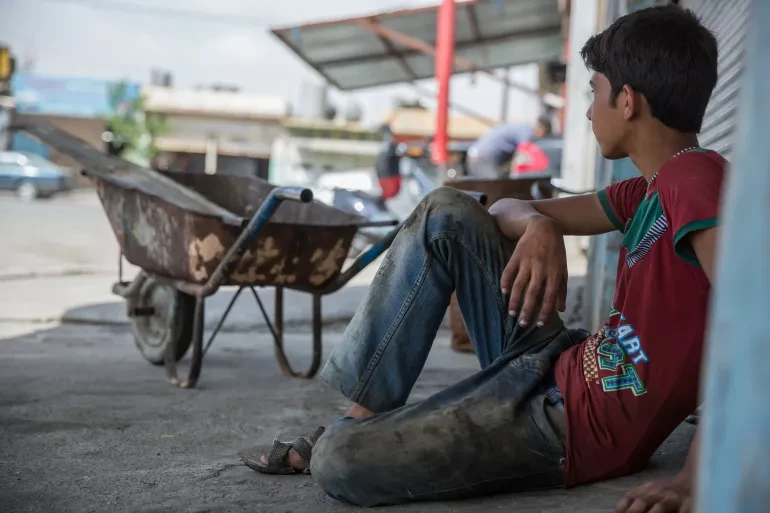9,000-year-old history behind focaccia: From Türkiye to Italy
 The Atlas sculpture carrying focaccia bread on its back, accompanied by structures representing Türkiye and Italy, November 29, 2024. (Image created with AI assistance, Image via Türkiye Today)
The Atlas sculpture carrying focaccia bread on its back, accompanied by structures representing Türkiye and Italy, November 29, 2024. (Image created with AI assistance, Image via Türkiye Today)
A groundbreaking study reveals that Neolithic communities in the Fertile Crescent, particularly in regions now part of modern-day Türkiye, developed an advanced culinary tradition between 7,000 and 5,000 B.C. These fully agricultural societies, known for their innovations in bread and “focaccia” production, used specialized tools to bake large loaves of bread, flavored with various ingredients, on trays known as husking trays.
The study, led by researchers from the Autonomous University of Barcelona (UAB) and the University La Sapienza in Rome, highlights the significant role these early culinary techniques played in communal living and the broader agricultural practices of the time.

Unveiling secrets of husking trays and focaccia
Published in the journal Scientific Reports, the study involved researchers from the Mila i Fontanals Institution (IMF-CSIC) and the University of Lyon in France. The team examined ceramic fragments from husking trays found in archaeological sites in Syria and Türkiye, including Mezraa Teleilat, Akarcay Tepe, and Tell Sabi Abyad. These husking trays, made from coarse clay, had an oval base and low walls, with internal surfaces marked by repetitive grooves and incisions.
Previous experimental work using replicas of these trays, along with cooking structures similar to those found at archaeological sites from the period, led researchers to hypothesize that large loaves made with water and flour were baked on these trays inside domed ovens. The study suggests that these loaves, weighing around 3 kg, were likely intended for communal consumption, emphasizing the social aspect of early bread-making.
Flavors of past: Animal fat and more
The research team conducted a series of analyses to explore the role of these trays in preparing cereal-based doughs. Phytolith analysis (silica residues from plants) identified wheat (Triticum sp.) and barley (Hordeum sp.) flour as common ingredients. Organic residue analysis, meanwhile, provided evidence of the use of animal-derived ingredients, such as animal fat, and possibly plant-based seasonings in the preparation of focaccias.
In one instance, the trays showed evidence of cooking temperatures compatible with those required for baking doughs in domed ovens. The use of these specialized trays for baking bread and seasoned focaccias suggests a sophisticated culinary culture that spanned over six centuries.
Shared culinary legacy in Near East
Sergio Taranto, the lead author of the study, explained that the research offers a vivid portrayal of Neolithic communities in the Near East using the cereals they cultivated to prepare bread and focaccias enriched with various ingredients. This practice not only highlights their advanced agricultural techniques but also offers insight into the social dynamics of these ancient societies.
The study also involved the participation of researchers from Istanbul University and Koc University in Türkiye, who analyzed the ceramic fragments and organic residues, further reinforcing the collaborative nature of this international research effort.
“The use of husking trays allows us to understand the culinary traditions of Late Neolithic communities and the broader scope of these practices across the Near East,” Taranto concluded. The findings indicate that this tradition was widespread, particularly in regions that now form part of modern-day Türkiye and its neighboring countries.
The discovery of ancient baking traditions in the Fertile Crescent region, which includes parts of modern-day Türkiye, reveals the long and fascinating history behind focaccia. This study, which highlights the development of bread-making techniques in the Near East, traces the culinary journey from early agricultural societies in Türkiye to the sophisticated bread culture that would later influence Mediterranean cuisines, including that of Italy. The shared history of bread-making connects cultures across millennia, with focaccia today standing as a testament to these ancient traditions.
As modern research continues to uncover the roots of our culinary heritage, the 9,000-year-old focaccia tradition reminds us of the deep ties between the regions of the Near East and Mediterranean, from Türkiye’s fertile plains to Italy’s famed culinary landscape.



